#brahms 4
Text
Although his catalog lists just four symphonies, Brahms wrote several other works that come close to that genre: his First Piano Concerto was indeed planned as a symphony, and the Second (which is in four movements) has been called a symphony with piano obbligato. Although the Second and Third Symphonies were introduced in Vienna, Brahms decided to give his Fourth Symphony an out-of-town tryout. He himself conducted the premiere (in October 1885) with the Meiningen Court Orchestra, where the audience was enthusiastic. Vienna was not so receptive when the work was introduced there a few months later. As it turned out, a mere ten years after his First Symphony had been given its premiere, Brahms had written his last symphony. Two years later came the Double Concerto, whose two solo parts (violin and cello) remind us of the old sinfonia concertante form, but there were to be no more symphonies.
For his final essay in symphonic form, Brahms produced a monumental work whose first movement grows from the simplest of materials, a simple rising and falling interval, out of which he develops long lines of powerfully emotional, yet unsentimental grandeur. The relentless organic development, which begins even as themes are being stated, leads to a complex interaction of motives and melodic fragments. The composer’s friend Elisabeth von Herzogenberg wrote to him of her fears that he was dwelling too much on creating intricate thematic connections that would obscure his musical communication for the untrained listener: “…one rejoices with all the excitement of an explorer or scientist on discovering the secrets of your creation! But there comes a point where a certain doubt creeps in…that its beauties are not accessible to every normal music-lover.”
What makes the music so compelling, in fact, may be the way the longer lines ebb and flow with great urgency and lyrical beauty, while at the same time the contrapuntal complexities lend substance and richness to the texture. As an example of how the opposing camps of Wagnerites and Brahmsians always seemed to have something nasty to say about each other, note the comment of composer Hugo Wolf – one of the Symphony’s detractors – that Brahms was “composing without ideas.” Schoenberg, although he followed in the wake of Wagner’s progressive chromatic proclivities, was a strong supporter of what he described as Brahms’ technique of “developing variation.” Certainly Beethoven had proved that minimal materials could be the source of substantial music.
After the powerful conclusion of the first movement, Brahms introduces the second movement with a forceful statement by two horns, followed by a ravishing passage in which all of the strings play delicate pizzicato chords supporting a sustained melody in the winds. As in the famous finale (in which Brahms looks to earlier musical models for his structure), there is an archaic quality to this music, which is the result, in part, of the composer’s use of the medieval Phrygian mode. This rather mournful meditation is interrupted by more animated passages, but there is an overriding tone of “the shadow of an inevitable fate.” (Karl Geiringer)
In the other Brahms symphonies, there is no movement that could be said to fulfill the role of the scherzo in the Beethoven mold; that is not true in the Fourth Symphony. Here the third movement overflows with high spirits and raw energy, with the piccolo and triangle added to the performing forces for extra sizzle. The structure, though, is not that of a traditional scherzo with a contrasting middle section; in fact, this movement is in sonata form, and it includes material that prompted Hermann Kretschmar (writing in 1887) to note “its hastening, restless rhythms…its suddenly pulsing energy, and…the predominant harshness of its character.”
Brahms, a diligent student of musical history, was always ready to draw on the styles and forms of earlier ages. The final movement of the Fourth Symphony is the best-known such instance, and it is usually characterized as a passacaglia, with reference to Bach. Although the theme which recurs throughout is drawn from Bach’s Cantata No. 150, conductor and Baroque specialist Nikolaus Harnoncourt feels strongly that the form itself is more typical of the concluding movements in French operas from the Baroque era (especially Rameau). What is undeniable is the sense of cumulative power Brahms creates with his “old-fashioned” methods. The theme is repeated some 30 times, but the musical material is organized (texturally, dynamically, and above all emotionally) into a sonata-like structure: The extended opening section is followed by more relaxed (but still troubled) passages of a lyrical, yearning character (in which a solo flute is prominently featured). A renewed energy marks the beginning of a kind of development, culminating in three variations that recall the opening ones. The concluding pages of the Symphony are relentlessly charged with defiance and bristling with slashing intensity. For once, there is no coda. No triumph, no joy, no radiant string chords. The rest… is silence.
— Dennis Bade
0 notes
Text
#hajime hinata#nature#Everglow#rap3 me#the sims 4#the little mermaid#chris evans imagine#buffy the vampire slayer#illustrator#max mayfield#brahms heelshire#concert#richard madden#tswiftedit
121 notes
·
View notes
Text
#sandra bullock#john soap mactavish#bruce banner#the sims 4#buffy the vampire slayer#brahms heelshire#starscream#kim seokjin#cod x reader#locked#[oc]#free games#handsome male#marine biology#the last hours
126 notes
·
View notes
Text
https://stacy-215.szhdyy.com.cn/zt/dCv9Rmg
https://stacy-215.szhdyy.com.cn/zt/dCv9Rmg
#the sims 4#the little mermaid#sunghoon#pop team epic#Eliza Ibarra#buffy the vampire slayer#illustrator#brahms heelshire#richard madden#milly alcock#kim seokjin#usa#old internet#fitfam
127 notes
·
View notes
Text
I DONT REMEMBER MAKING THEM IN THE SIMS???
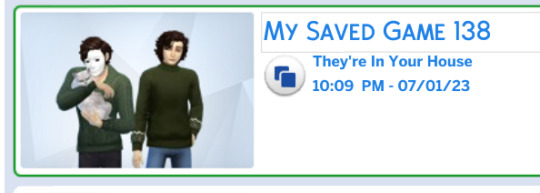
ohhh theyre so cute </3
#i havent played in forever#actually i made them and left immediately#havent touched it since#billy lenz#brahms heelshire#black christmas 1974#the boy 2016#lenzshire#the sims 4
185 notes
·
View notes
Text

🍇 Brahm Twins
After a previous visit, these twins decided to transplant their lives from the bustling cityscape to the serene, sun-drenched vistas of Chestnut Ridge to pursue a dream: cultivating a thriving vineyard. Jovial, social whirlwind Emiya was the passionate force behind the move. Quiet Benjiro brings a sense of grounding to their ambitions and works as a ranch hand, though he ultimately finds solace in the chords of his guitar.
Original household. Includes hand-picked preferences, skills, careers, etc. On the gallery at m0ckest or tray files below. Enjoy!
⤷ simfileshare • patreon
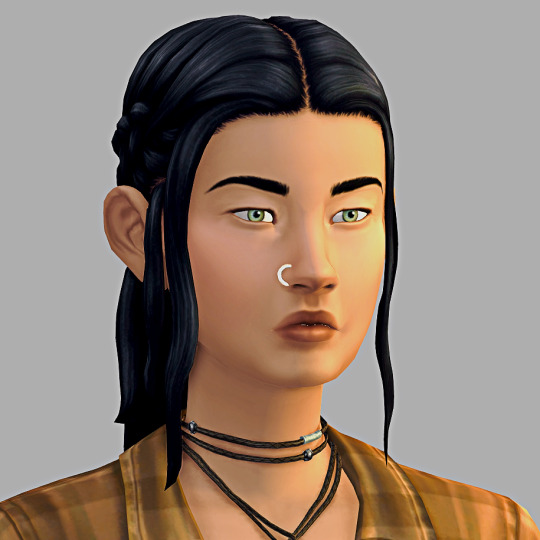
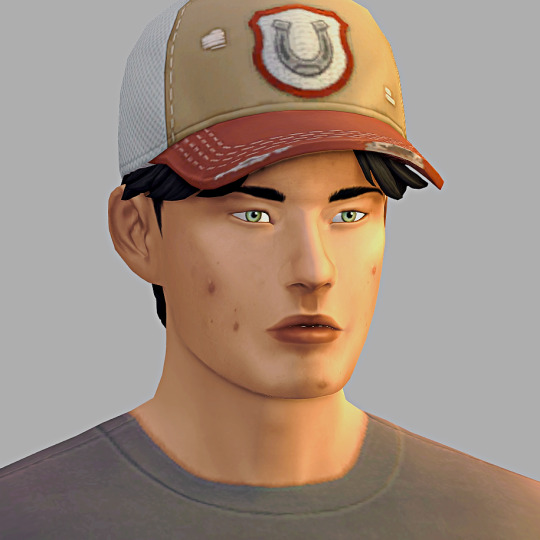
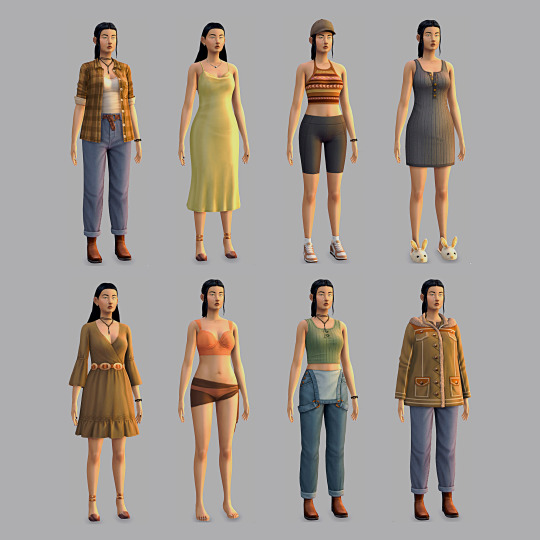
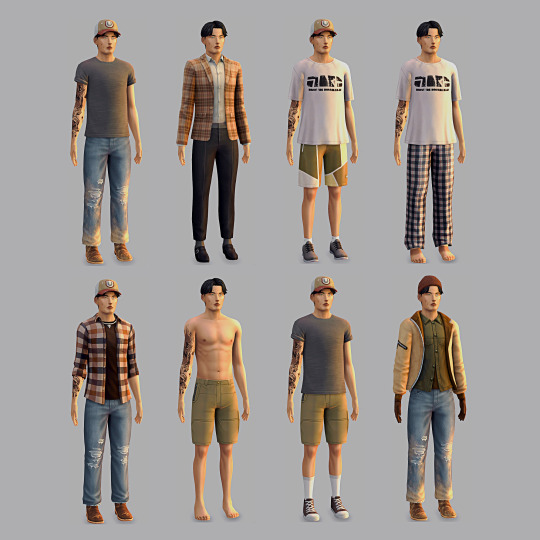
24 notes
·
View notes
Text
JOHANNES BRAHMS
BORN: May 7, 1833. Hamburg
DIED: April 3, 1897. Vienna
COMPOSED: Brahms’s first mention of the Fourth Symphony is in a letter of August 19, 1884 to his publisher, Fritz Simrock. The work must have been completed about a year later at Mürzzuschlag
WORLD PREMIERE: October 25, 1885. Brahms conducted at Meiningen
US PREMIERE: December 11, 1886. Walter Damrosch conducted the New York Symphony
INSTRUMENTATION: 2 flutes and piccolo, 2 oboes, 2 clarinets, 2 bassoons and contrabassoon, 4 horns, 2 trumpets, 3 trombones, timpani, triangle, and strings. Piccolo and triangle appear in the 3rd movement only, contrabassoon in the 3rd and 4th movements only, and trombones only in the finale
DURATION: About 40 mins
Brahms’s Fourth Symphony was written in 1885 when he was fifty-two and starting to think of retirement and the time that remained. The symphony is a summation of its composer’s learning and technique, but for all its complexities it cuts as close to the heart as music can. One imagines that this is the work Brahms always wanted to write, a work in which form and function are balanced, in which technique opens new paths to expression, allowing him to voice his deepest convictions about all the unnamables that shape destiny. If any of Brahms’s music conveys a world view, this is it.
Listen to the first sighs in the strings. The voice is at once resigned and searching and its broad phrases are transformed for a moment into a nervous figure in the winds before growing into a lament of deep yearning. Throughout this movement, the nervous and the keening will alternate, and they fuse in the odd episode that sounds as though Brahms had entered the world of the tango, where dance steps offer a staccato accompaniment to long languid lines. By the end of the movement, all this has changed. A chapter that began with music saturated in regret has taken on resolve. The broad probing phrases of the opening bars are compressed into projectiles of energy, gathering momentum until they erupt in a cataclysmic climax.
The summons of a horn call begins the Andante moderato, outlining a figure that the winds take up, a pacing, tentative melody of closely spaced intervals, a melody that fails to range far from where it starts—we are still recovering from the upheaval in which the first movement ended. Soon, however, the possibilities of warmth in this theme are revealed, and the high strings enter to transform carefully ventured steps into a high-temperature flow of gloriously confident forward movement. Staccato bursts end this, but their energy dissipates quickly, and in their place comes one of Brahms’s most miraculously expansive creations. Even when those staccato jabs are later reprised in a more tortured form, the answer is the same. The opening movement was tragedy on an epic scale. The second movement is the response, offered in more human proportions. The great song at the heart of this Andante serves as a calmative to the stunned and anguished music that precedes it.
The aggressively upbeat scherzo seems initially out of place, given what comes immediately before and after, and yet it is utterly apt. We need some relief from the unremitting seriousness of the first two movements, and here Brahms supplies it. His humor, though, also has a crueler side. For this happy music will be followed by what, in 1885, was the most uncompromising, pessimistic conclusion ever heard in a symphony.
In his first two symphonies, Brahms had followed Beethoven’s model, ending each of those works in the affirmative. In his Third Symphony, he made an entirely novel ending, choosing to finish quietly. He followed that venture into new territory by going even farther in the Fourth Symphony. Here, in the finale, he wrote music not simply personal and not simply contemporary, but music that looked into the future, toward a century that would validate his apprehensions.
The irony is that Brahms’s vehicle for conveying this vision was an ancient musical form. Brahms the traditionalist was fascinated with the music of Bach and Handel. In his studies of the Baroque he familiarized himself with forms such as the passacaglia, a set of variations over a recurrent bass. He was especially taken with one he found in a cantata listed in the Bach catalogue as No. 150, a cantata whose very title lends meaning to this movement of the symphony, Nach Dir, Herr, verlanget mich—“I long to be near you, Lord.” Brahms was no conventional churchgoer, and though he may not have acknowledged any one deity as “Lord,” he had a sense of powers beyond the human. On the theme from Nach Dir, Herr—the eight chords that begin the finale—he builds his case: thirty-two variations that define a world. Brahms presents a constantly evolving drama, one that wastes no time covering ground already explored but that continues its explorations ever more deeply. He offers no happy ending—in fact, the end comes almost before we know it. As in life. And if we never know whether Brahms nears his “Lord,” whoever or whatever that might be, the answer is not important. The road is filled with detours and washed-out bridges, and we only hope we can negotiate the obstacles with grace. We may discard schedules and itineraries, but we don’t quite abandon the conviction that one day we may arrive at the destination. As we head there, we can be grateful for a traveling companion like Johannes Brahms.
—Larry Rothe
0 notes
Text
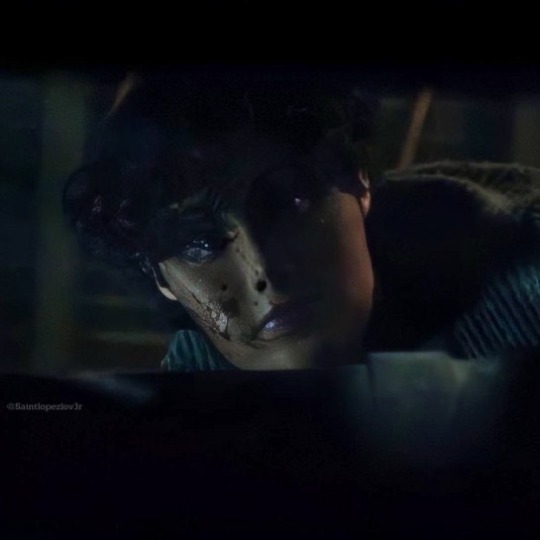

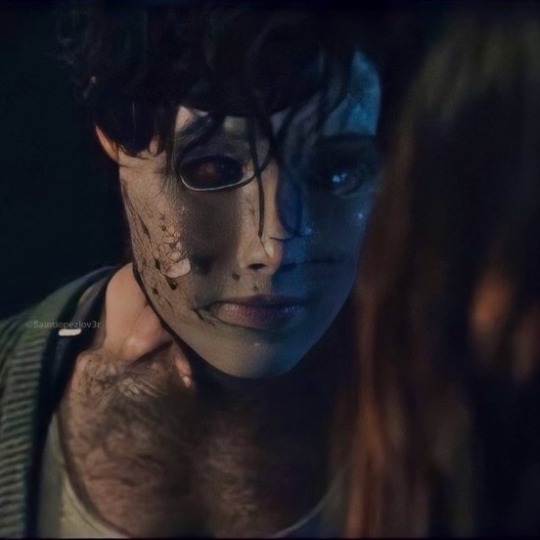
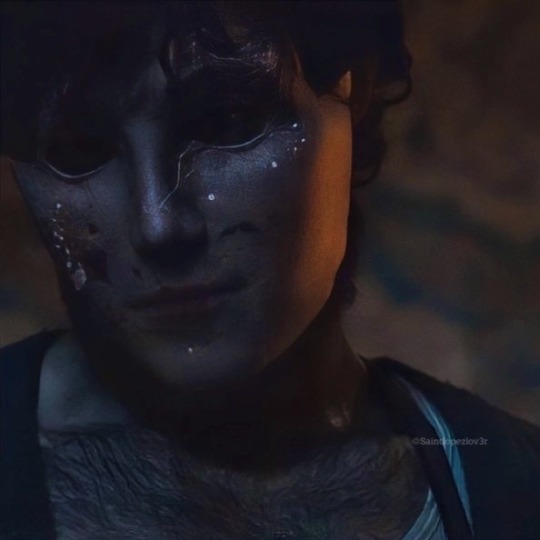
Brahms Heelshire🕯️
The Boy
44 notes
·
View notes
Text
the reason why brahms is better than malcom is that malcom would mourn the death of the queen but brahms wouldnt care at all i rest my case
#brahms heelshire#brahms#the boy 2016#brahms the boy#brahms the doll#the boy#malcom#queen elizabeth#queen elizabeths death#i don rlly think he acknowledged her existence considering he lived in walls for most of his life#malcom is sobbing n gretas arms liek SHES DAED GRETAH SHEAS DAEDDDD nd brahms is oh no anyways#i am using the death of a colonizer 4 my hyperfixation idc
203 notes
·
View notes
Note
If slashers interact regulalary, like as if going about more or less like rgeular people(but still slahsers of course :P), I am curious. Jamie Llyod, how would slashers interact with there buddies niece?Suddenly finding herself with a bunch of honorary "uncles"
Specific curisiotes include, Brahms, Jason, Bubba, both Scream guys(Billy and Stu), Leslie Vernon, and anyone else you might wanna toss in there if your happy to answer :)
AWWWW (i had to google Jamie Llyod cuz i thought you meant a guy from lego ninjago cartoon series and i was a little confused) Request open!!
Voorhees Jason
HE WILL BE SO SCARED PLS HE, HE CANT, HE CANNOT COMPERHAND
Accually he seems to be great with kids, he is just overthinking. If they go to shop together he wont be able to resist buying her whatever snack she wants!
He would rather pick her up and carry her around than to hold her hand because he gets distracted easly and he would just loose her in middle of forest
Jason will melt if jamie will say something along the lines "you are the best unlce ever!!" he will litteraly pass out and die
Jason and Micheal are besties so i can see them just hanging around and Micheal just randomly bringing her with him. just to chill and vibe. It would be very quiet vibe due to them being mute but it doesnt stop them from hanging out!
Billy and Stu! (tw to yall homophobes, this biches gay)
"ew a child..." "sup uncle Billy and Stu" "uhh look you are here only because Micheal made us baby sit you" "lol okay"
"I hate childen so much Stu :( " "Cmon its not that bad! She painted my nails!" "of course she did" "Also she said Im way better baby sitter than you!" "I- aint no way you are better than me"
This evening just turned into Billy and Stu trying to beat each other in "who is better uncle" competition
"Hey Jamie wanna see a scary movie :]" "cmon shes like 4" "im almost sure shes like 7 dude"
"I'm hungry im calling Micheal" "NONONO I- i mean why- we ordered fastfood! right Stu?" "uhh yeaahh, wait i just need to go outside for a, eeehh for an *runs to nearest fastfood to buy sometihng to eat*
they forgor that children accualy have to eat
they are so chaotic, they will fall asleep together (all 3) while watching Sponge Bob (Stu and Billy are secretly boyfriends btw i do not care that it has nothing to do with this headcanons, i just wanna inform you all)
"I know you guys are gay" " :O WHAT! I mean- who told you that! pfff some prankster probably" "I saw you hold hands! and thats what people do when they love each other! :3"(top tier sin)
Billy and Stu live together probably and their house is such a mess! its probably huge too, because Stu perents kinda rich. So i can imagine them loosing Jamie in middle of hause and then looking for her (shes goofy ah she will pretend they are playing hide and seek jsut to scare the shit out of them)
Heelshire Brahms
HE he would be so akward!!! Like "ehhh uhh hello child why are you in my house child, uhhh bloody hell" (Quick reminder that hes British and i will make fun of him)
HE WOUDL PROBABLY CALL MICHEAL "Uhhh Mr Micheal ur eeh your niece is here uhh can you like pick her up-" Jamie just standing behind hir "AAH-You, you wanna play scrabbles?" "ew no, can we play hide and seek" "Oh.My.God nevermind you can stay"
Micheal just comes to pick her up or something and Brahms with Jamie are already besties and they prolly made frienship braslets (and shit talk some people too)
okay ladies im back and i will write some more soon! pls comment and dont remember to like and subscibe and hit that bell button
tbh i dint have a lot of ideas (thats why Bubba isnt included i just had no clue what to write) but its good ig, and if i will find any people bullying stu/billy for being homosex i will steal ur steam account B)
x reader tags are only for more people to reach this post nothing sus here
#slasher x reader#brahms headcanons#brahms heelsire#brahms imagine#brahms x reader#brahms the boy#jason vorhees headcanon#jason vorhees imagine#jason voorhees#jason vorhees x reader#friday 13th#halloween 4#billy loomis x reader#stu matcher fluff#stu matcher x reader
56 notes
·
View notes
Text
finally made Brahms in the sims woot






sadly I couldnt find a good mask or a better scar mod to complete his ensemble but ayyy everything is alright enough
#sims 4#sims cc#Sims Mods#brahms heelshire#Slashers#psssttt if anyone has a Brahms-worthy scar and mask mod pls send them my way
49 notes
·
View notes
Text
youtube
#Hungarian Dance No. 4#Poco sostenuto#Johannes Brahms#Piano#pdf#violin#guitar#music notes#sheet music#flute#notes#piano sheet music#Youtube
5 notes
·
View notes
Text

Fallout NV : Nothing
Fallout 4 :
Cait, Curie and Deacon react to sole acting like a player
Fallout 3 :
Lone asks Charon something
FO3 companions react to LW with good karma
How do the fo3 companions show their jealousy of LW, and then claim that they are not
Call of duty :
People agree with me about Soap in a horror ff
Task force 141 and Los vaqueros in an interview
The dark depths
Jealous John Price with F!Reader jewelry maker
Ninjago :
Elemental master hunger games
Father regret's | Ronin pt 1 | pt2
Brahms Heelshire :
The funereal stairs
OC trash :
Fallout 4 | Lance Rodrig | pt 1 | pt 2
Call of duty |
credits : dividers by @cafekitsune thank for this
3 notes
·
View notes
Text
My Billy & Brahms sims (up close) :3
@dancingsamural


Btw Brahms won the pillow fight
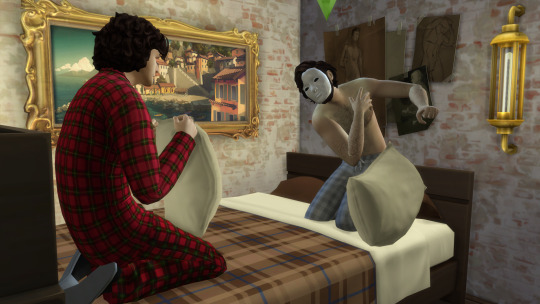
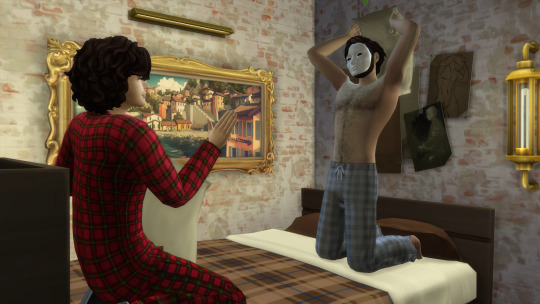
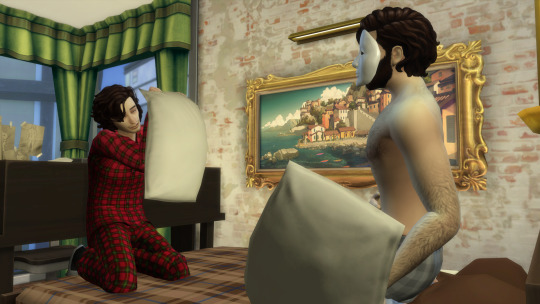
117 notes
·
View notes
Text
this one goes out to the extravagant animatics that will never ever see the light of day because i. can’t draw
10 notes
·
View notes
Text
Brahms began composing his last symphonic masterpiece at a mountain retreat in 1884, about a year after completing the Third Symphony. Brahmsians often label it as the composer’s “magnum opus,” although the German Requiem competes for that designation. It was composed specifically for the Meiningen Court Orchestra, led by his friend Hans von Bülow, rather than for Vienna. Brahms was concerned from the outset about the work’s accessibility, but audiences responded enthusiastically. It is quite serious and even tragic. Although the third movement competes with the finale of the Second Symphony for sheer exuberance, this only emphasizes through contrast the severity and strictness of the finale. The chains of thirds introduced in the first movement, as well as the emphasis on the note C in all four movements, characterize the symphony. Bülow, only half-jokingly, remarked after the first movement was played on two pianos at a private gathering, “For the whole movement I had the feeling that I was being given a beating by two incredibly intelligent people.”
It is the only one of Brahms’s symphonic first movements to avoid repeating the exposition, although the development begins with the first theme in its original form. The second movement is known for its suggestions of the Phrygian mode. The first two movements also have notably unusual final cadences. The only third movement in the symphonies that actually sounds like a scherzo is paradoxically the only one to avoid the three-part scherzo-like form. The introduction of the triangle is the only time in the symphonies that a percussion instrument other than timpani is used. Although it seems anomalous, the movement does have clear references to the other three, even suggesting the theme of the finale’s variations in the alternating high and low chords in the coda.
The extraordinary finale is a passacaglia or chaconne (Brahms used the latter term), a form common in the early eighteenth century. It is a series of 30 continuous variations on an eight-bar stepwise rising theme. Said to be derived from a Bach cantata (specifically Cantata #150), Brahms gives the theme its essential character by making the fifth note and its harmonies chromatic (outside the E-minor scale). The variations can be split into four sections roughly corresponding to the first theme group, second theme group, development, and recapitulation of sonata form (used in all three of the other movements). The brief coda ends the symphony with a powerful impact.
Though intellectually and emotionally somewhat challenging, the symphony’s greatness was already acknowledged by Brahms’s death a decade later. The orchestra is of standard size, with double woodwind, four horns, two trumpets, and timpani. Contrabassoon, piccolo, and triangle are used in the third movement. Three trombones (and contrabassoon) are used in the fourth movement.
0 notes